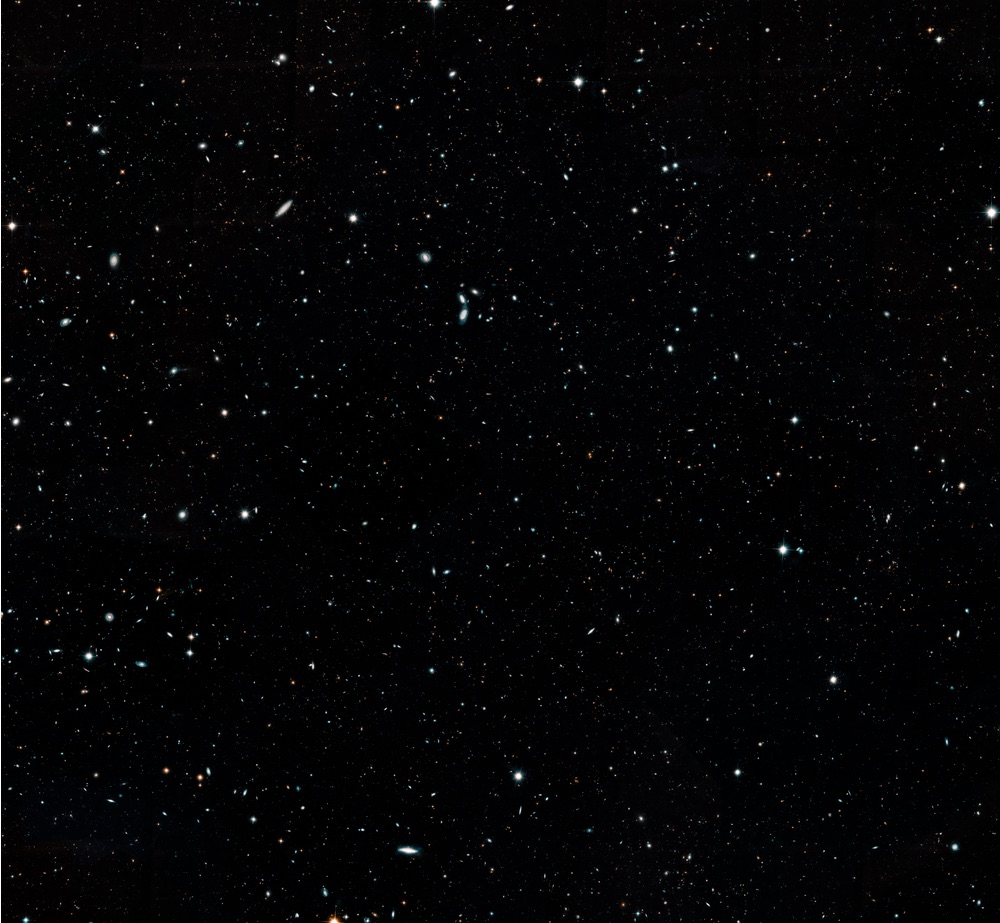Hubble Scientists Just Released the Most Detailed Picture of the Universe Ever

Scientists have created a new family photo of the universe. Not unlike the photos in your family album, this panorama of galactic history contains old galaxies and infants, well-established worlds and — unavoidably — an occasional train wreck.
The new image, released May 2, is known as the "Hubble Legacy Field." The image represents the most comprehensive view of the universe to date, stitching together more than 7,500 Hubble Space Telescope observations taken over 16 years. The final composite image contains some 265,000 galaxies, many of which are so far away that their light has taken billions of years to meet the Hubble's gaze.
"This one image contains the full history of the growth of galaxies in the universe, from their time as 'infants' to when they grew into fully-fledged 'adults,'" Garth Illingworth, an astronomer at the University of California, Santa Cruz and lead researcher on the project, said in a statement.
The Hubble has since taken tens of thousands of hours of observations — all day, every day, for nearly three decades. (The telescope just celebrated its 29th birthday with this stunning image of the Southern Crab Nebula.) Hubble researchers hope that this new mosaic of alien galaxies, which combines the last 16 years of those observations, will inspire other astronomers to uncover the secrets held within these worlds, including the origins of galactic "train wrecks" — the mishmash of stars that result when two or more young galaxies collide with one another. (The Milky Way, for what it's worth, is probably one such train wreck.)
As detailed as this image is, its depth of field may be surpassed within a decade. Sometime in the mid-2020s, NASA hopes to launch a new eye in the sky called the Wide Field Infrared Survey Telescope (WFIRST). If all goes according to plan, each photo snapped by WFIRST will capture 100 times the view of a typical Hubble image. Look forward to a new family photo of the universe, showing tens of millions of distant galaxies side by side.
- 15 Unforgettable Images of Stars
- The 12 Strangest Objects in the Universe
- 9 Scientific Excuses for Why We Haven't Met Aliens Yet
Originally published on Live Science.
Sign up for the Live Science daily newsletter now
Get the world’s most fascinating discoveries delivered straight to your inbox.

Brandon is the space/physics editor at Live Science. His writing has appeared in The Washington Post, Reader's Digest, CBS.com, the Richard Dawkins Foundation website and other outlets. He holds a bachelor's degree in creative writing from the University of Arizona, with minors in journalism and media arts. He enjoys writing most about space, geoscience and the mysteries of the universe.









